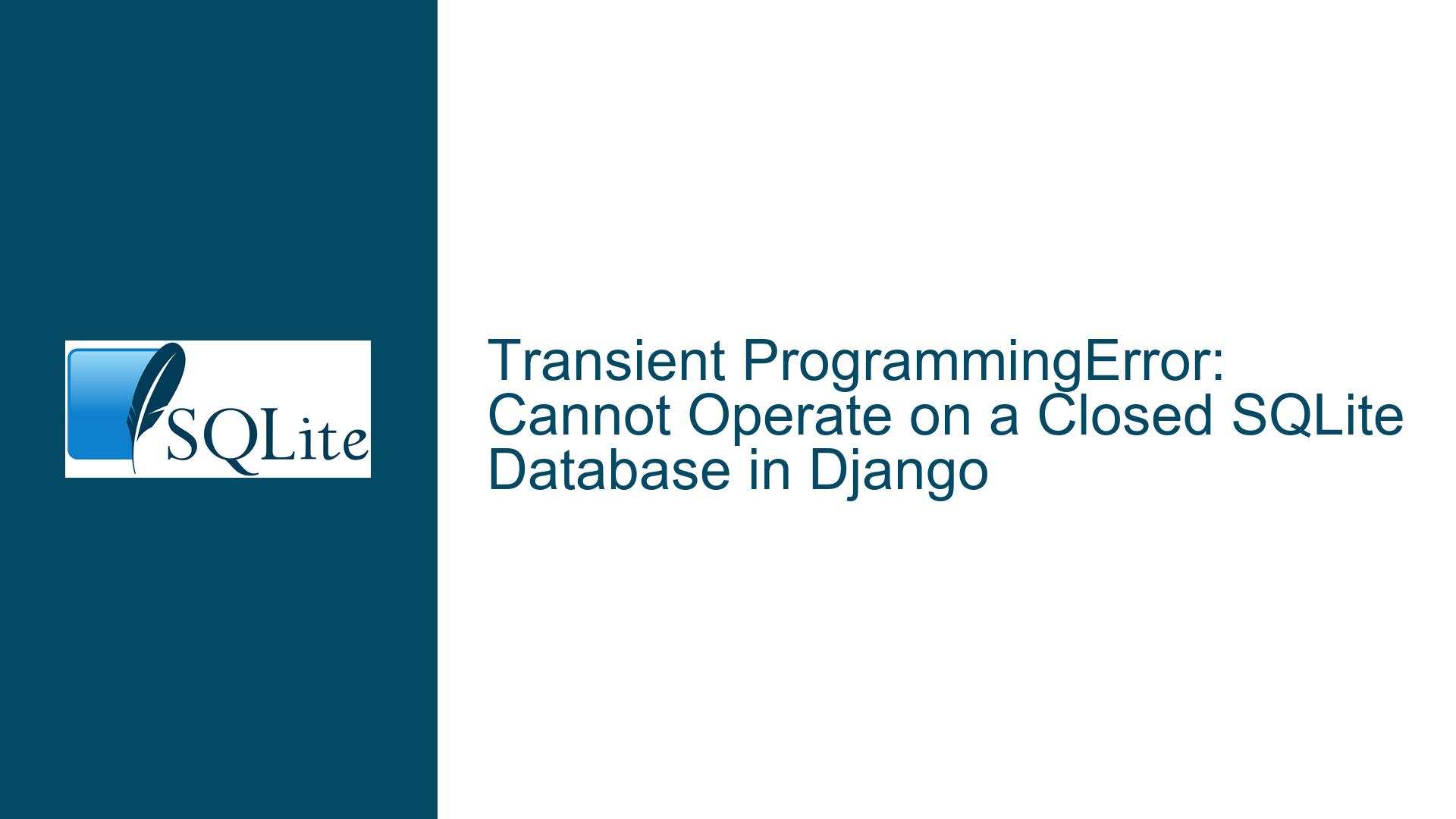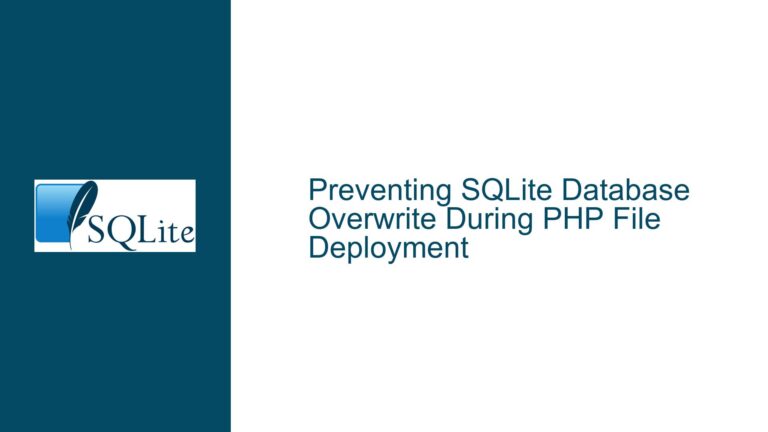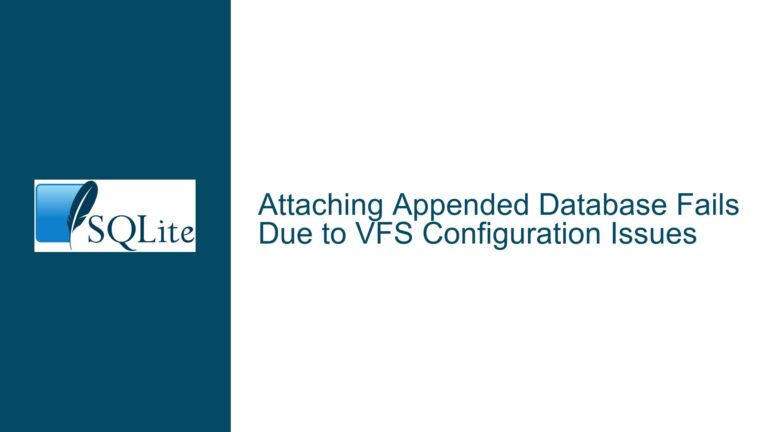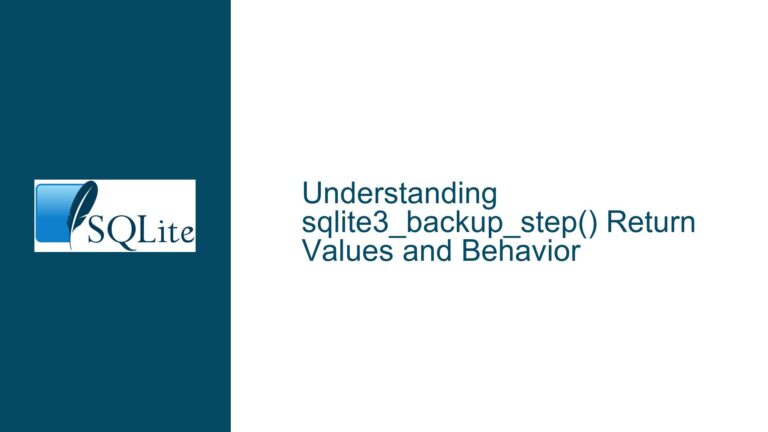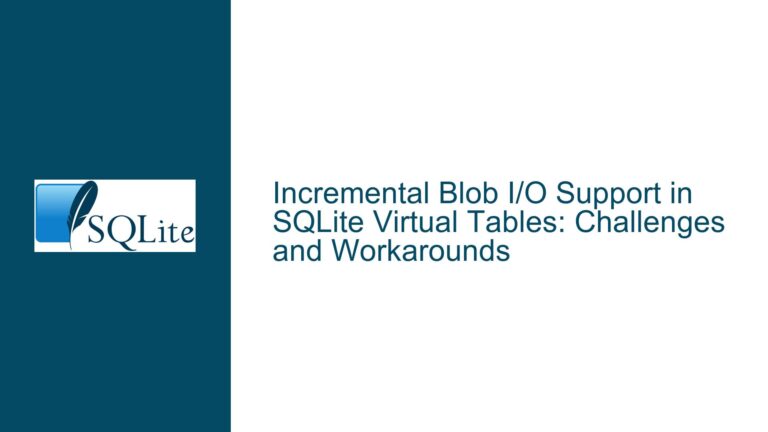Transient ProgrammingError: Cannot Operate on a Closed SQLite Database in Django
Issue Overview: Transient "Cannot Operate on a Closed Database" Error in Django with SQLite
The core issue revolves around a transient ProgrammingError in a Django application that uses SQLite as its database backend. The error message, "Cannot operate on a closed database," occurs intermittently during an INSERT operation in a Django view. The view is designed to perform a simple database operation: it connects to the SQLite database (implicitly handled by Django) and attempts to insert a row into a table with approximately 20 fields and 100 rows. The error is transient, meaning it does not occur consistently and may disappear on subsequent attempts.
This issue is particularly perplexing because the database connection is managed by Django, and the error suggests that the connection is being closed prematurely or is not being established correctly. The transient nature of the error further complicates debugging, as it points to a potential race condition, resource contention, or an underlying issue in the connection management logic.
The error originates from the Python sqlite3 module, which Django uses under the hood for SQLite operations. However, the specific error message is propagated through Django’s database abstraction layer, making it challenging to pinpoint whether the root cause lies in Django’s connection handling, the sqlite3 module, or the SQLite database itself.
Possible Causes: Connection Management and Resource Contention in Django with SQLite
The transient nature of the error suggests that the issue is related to the lifecycle of the database connection. Several potential causes could lead to this behavior:
Premature Connection Closure by Django: Django’s connection management system might be closing the database connection before the
INSERToperation completes. This could happen due to misconfigured connection pooling, garbage collection, or an unexpected exception being raised and swallowed by Django’s middleware or database wrapper.Race Conditions in Connection Handling: If multiple threads or processes are accessing the same SQLite database concurrently, a race condition could occur where one thread closes the connection while another is still using it. SQLite is not inherently designed for high-concurrency scenarios, and improper handling of connections in a multi-threaded Django application could lead to such issues.
Resource Exhaustion or File Descriptor Limits: The operating system might be closing the database file descriptor due to resource exhaustion or hitting the maximum number of open file descriptors. This could cause the database connection to be closed unexpectedly, leading to the observed error.
SQLite Database File Corruption or Locking Issues: Although less likely, the SQLite database file itself could be corrupted or locked by another process, causing the connection to fail intermittently. This could be due to improper file permissions, a misconfigured file system, or an external process accessing the database file.
Django Middleware or Signal Handlers Interfering with Connections: Django’s middleware or signal handlers might be interfering with the database connection lifecycle. For example, a custom middleware might close the connection prematurely or fail to handle exceptions properly, leading to the connection being closed unexpectedly.
Python Garbage Collection Interfering with Connection Objects: The Python garbage collector might be reclaiming the database connection object before the
INSERToperation completes. This could happen if the connection object is not properly referenced or if the garbage collector is triggered at an inopportune time.
Troubleshooting Steps, Solutions & Fixes: Diagnosing and Resolving the Transient Connection Error
To diagnose and resolve the transient "Cannot operate on a closed database" error, follow these detailed troubleshooting steps:
Verify Database Accessibility and Integrity: Use the SQLite command-line tool to open the database file and inspect its schema. Run the
.schemacommand to list all tables and ensure that the database is accessible and not corrupted. If the database file is inaccessible or corrupted, restore it from a backup or recreate it.Enable Django’s Database Logging: Configure Django to log all database operations by setting the
DEBUGoption toTruein thesettings.pyfile. This will provide detailed logs of all database connections, queries, and errors, helping to identify when and why the connection is being closed.Audit Database Connection Lifecycle: Implement audit hooks in the Python
sqlite3module to track the opening and closing of database connections. Use thesys.addaudithookfunction to log audit events forsqlite3.connectandsqlite3.connect/handle. This will help verify whether the connection is being closed prematurely or if there are issues with the connection establishment.Inspect Django’s Connection Pooling Configuration: Review Django’s database connection pooling settings in the
settings.pyfile. Ensure that theCONN_MAX_AGEparameter is set appropriately to control the lifetime of database connections. A value of0disables connection pooling, while a positive value specifies the maximum age of a connection in seconds.Check for Concurrent Database Access: If the Django application is running in a multi-threaded or multi-process environment, ensure that the SQLite database is accessed in a thread-safe manner. Consider using a file-based locking mechanism or switching to a more concurrency-friendly database backend like PostgreSQL if high concurrency is required.
Review Custom Middleware and Signal Handlers: Inspect any custom middleware or signal handlers in the Django application that might interfere with the database connection lifecycle. Ensure that these components handle exceptions properly and do not close the connection prematurely.
Monitor System Resource Usage: Monitor the system’s resource usage, including file descriptors, memory, and CPU, to identify potential resource exhaustion issues. Use tools like
lsofto check the number of open file descriptors andtoporhtopto monitor system resource usage.Test with WAL Mode Enabled: Enable SQLite’s Write-Ahead Logging (WAL) mode to improve concurrency and reduce the likelihood of locking issues. Set the
journal_modetoWALin thesettings.pyfile or by executing thePRAGMA journal_mode=WAL;command directly on the database.Reproduce the Issue in a Controlled Environment: Create a minimal reproducible example of the issue by isolating the problematic Django view and database operation. Use this example to test different configurations and identify the root cause of the transient error.
Consult Django Community and Documentation: If the issue persists, seek help from the Django community by posting a detailed description of the problem, including logs, configuration settings, and steps to reproduce the issue. Review Django’s official documentation and source code to gain a deeper understanding of its database connection management.
By following these troubleshooting steps, you can systematically diagnose and resolve the transient "Cannot operate on a closed database" error in your Django application. The key is to carefully inspect the database connection lifecycle, identify potential sources of contention or premature closure, and ensure that the application is configured to handle database operations reliably.
